The Apple iPhone 11, 11 Pro & 11 Pro Max Review: Performance, Battery, & Camera Elevated
by Andrei Frumusanu on October 16, 2019 8:30 AM ESTCamera - Daylight Evaluation: Triple Cameras
Thus far we’ve covered the iPhone 11 series' new A13 SoC, the new display and the phones' excellent battery life. But it’s very evident that above all that, Apple puts the new cameras at the forefront of the new device generation.
The new main camera on the iPhone 11s employ a new generation sensor with full dual-pixel phase-detection autofocus (PDAF) coverage. While the pixels themselves remain the same at 1.4µm in width, Apple will have likely improved the deep trench isolation (DTI) implementation, allowing for the sensor to achieve better detail and less noise.
The wide-angle camera will be the most interesting aspect of the new cameras: the 120° field-of-view of the new module will allow for a completely new perspective on photography for iPhone users, and should be a big new addition to the shooting experience of the phones.
As a note, I had started off the daylight comparison photos on the initial iOS13.0 launch version. By the time I got to the night time shots iOS13.1 was released so those photos were captured on that version. Finally, I added a quick comparison with the newest iOS13.2 and the new Deep Fusion feature towards the end of the daylight pages.
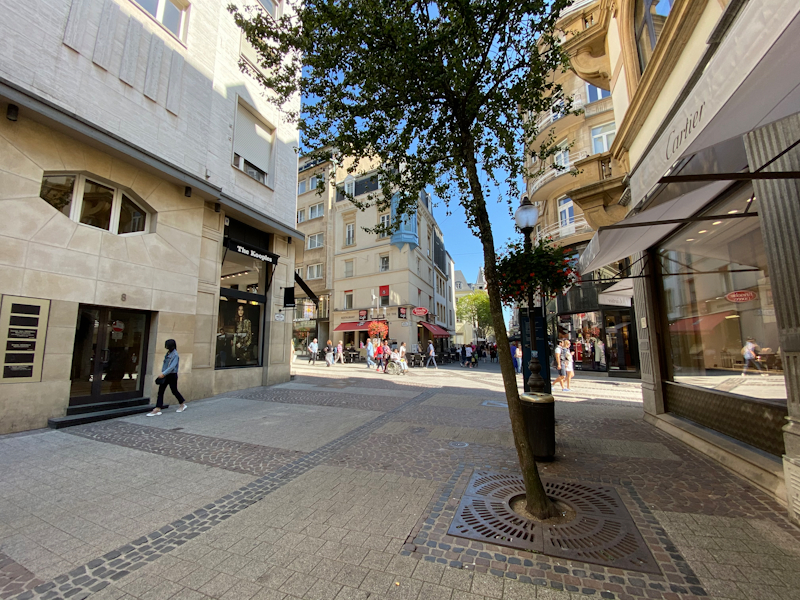
[ iPhone 11Pro ] - [ iPhone XS ] - [ iPhone X ]
[ S10+(S) ] - [ S10+(E) ] - [ Pixel 3 ]
[ P30 Pro ] - [ Xperia 1 ] - [ G8 ]
Starting off with the main camera, we’re seeing a relatively similar exposure between the XS and the 11 in this shot. I feel like the 11’s color reproduction has improved slightly. Another big difference is in the HDR handling as the sunlit areas in the street as well as the top of the building are significantly better defined on the new 11. Detail-wise I can’t say there’s been too much of a change between the two phones in this shot.
On the telephoto camera, which is only available on the Pro models, we’re seeing a slightly brighter picture on the 11. It looks like the 11 has increased noise on the textures here, and we’re seeing a bit less detail in the details further back in the scene.
The wide-angle is a fantastic new addition to the 11 series as it’s able to capture a lot more of the scene in front of you. Apple does very well in terms of maintaining a good consistency between the different cameras and thus exposure and colors are extremely similar.
Comparing the quality of the wide-angle shots to that of other phones however we see that the dynamic range is a bit lacking, and the camera is having trouble in terms of defining the foreground shadows of the trees and the flowers on the lamp-post. The module does well with textures, but is a bit lacking in finer detail.
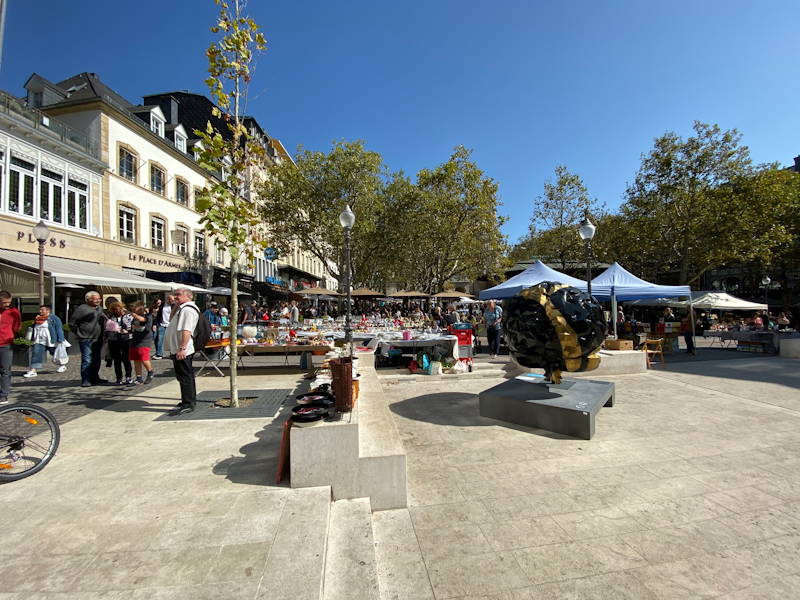
[ iPhone 11 Pro ] - [ iPhone XS ] - [ iPhone X ]
[ S10+(S) ] - [ S10+(E) ] - [ Pixel 3 ]
[ P30 Pro ] - [ Xperia 1 ] - [ G8 ]
In the next shot again, we see very similar exposures between the XS and the new 11. A definitive win for the 11 is the more accurate color temperature, as the XS had the tendency of being a bit warm. It’s very hard to make out any major differences in detail between the phones, but I do notice that the 11 has somewhat less detail in the texture of the ground.
On the zoom lens there’s very little difference again between the phones, however I feel that the 11 has less detail here and it’s as if it’s applying a sharpening filter. The trees particularly look more in focus on the XS – this might be a side-effect of the wider f/2.0 aperture lens on the new 11 module.
The wide-angle here makes it more visible that the color temperature is still a bit warm, as the concrete and stone had a greyer look to them in reality, something more similar to what the S10s are able to produce.

[ iPhone 11 Pro ] - [ iPhone XS ] - [ iPhone X ]
[ S10+(S) ] - [ S10+(E) ] - [ Pixel 3 ]
[ P30 Pro ] - [ Xperia 1 ] - [ G8 ]
On the main camera the improvements on of the HDR can be noticed again here as the 11 is better able to handle the highlights such as the leaves of the trees as well as the white tent – accurately depicting its details while the XS was clipping to white. There’s very little other difference in the details between the shots.
On the telephoto camera, here we’re definitely seeing some much increased noise on the iPhone 11 Pro's module compared to what the XS was able to deliver.
In terms of the wide-angle, I think it’s a matter of preference which phone you like most. What’s important for the iPhone 11 is that the composition between a crop of the wide-angle and the regular main camera looks almost identical and that’s a much appreciated degree of consistency.

[ iPhone 11 Pro ] - [ iPhone XS ] - [ iPhone X ]
[ S10+(S) ] - [ S10+(E) ] - [ Pixel 3 ]
[ P30 Pro ] - [ Xperia 1 ] - [ G8 ]
In this shot the statue in direct sunlight, we see the iPhone 11 Pro is able to resolve more details and remain sharper compared to the XS. This time around, we can also say the same about the telephoto module as the new unit is able to clearly outperform its predecessor.
On the wide-angle, while the iPhone 11 Pro did very well in composition, when we compare the details of the ground against the S10s, we see that it appears very washed out and blurry.
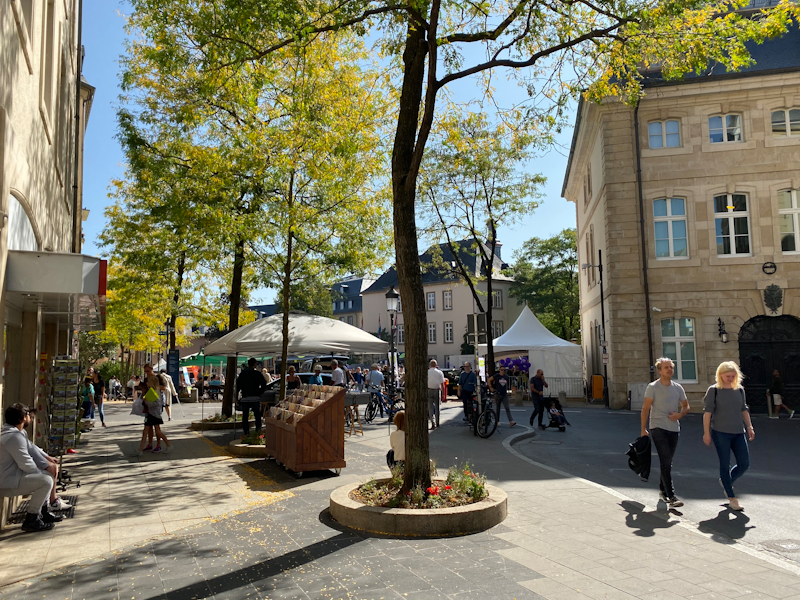
[ iPhone 11 Pro ] - [ iPhone XS ] - [ iPhone X ]
[ S10+(S) ] - [ S10+(E) ] - [ Pixel 3 ]
[ P30 Pro ] - [ Xperia 1 ] - [ G8 ]
In this shot you’d have an extremely hard time telling the iPhone 11 Pro and the iPhone XS apart. The 11 is able to render the tree leaves a little bit livelier, and I can see just a little bit less detail in the pavements, but other than that the shots are almost identical.
The telephoto here again seems to be as finely defined as on the XS – again not sure if this is due to optics or due to processing.
The wide-angle shot is excellent and I think a lot more natural than the Galaxy phones, really only falling second to the P30 Pro’s wide angle unit.
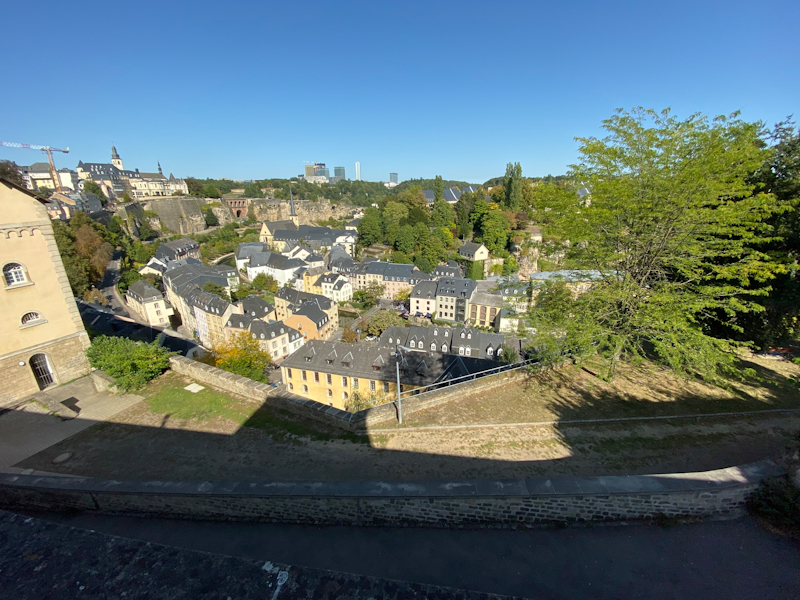
[ iPhone 11 Pro ] - [ iPhone XS ] - [ iPhone X ]
[ S10+(S) ] - [ S10+(E) ] - [ Pixel 3 ]
[ P30 Pro ] - [ Xperia 1 ] - [ G8 ]
The iPhone 11 Pro is able to better extract the saturation of the sunlit foliage in this shot and I think it looks a lot livelier than the XS. Detail between the two generations are even.
In the telephoto modules we see the same saturation change for the better, and this is one instance where the 11 does better in terms of detail as it’s able to have better definition of the roof tiles.
Apple’s wide-angle here is the most natural, even though it’s lacking Samsung’s much wider dynamic range – the latter here went a bit wacko in terms of the luminosity/saturation processing.
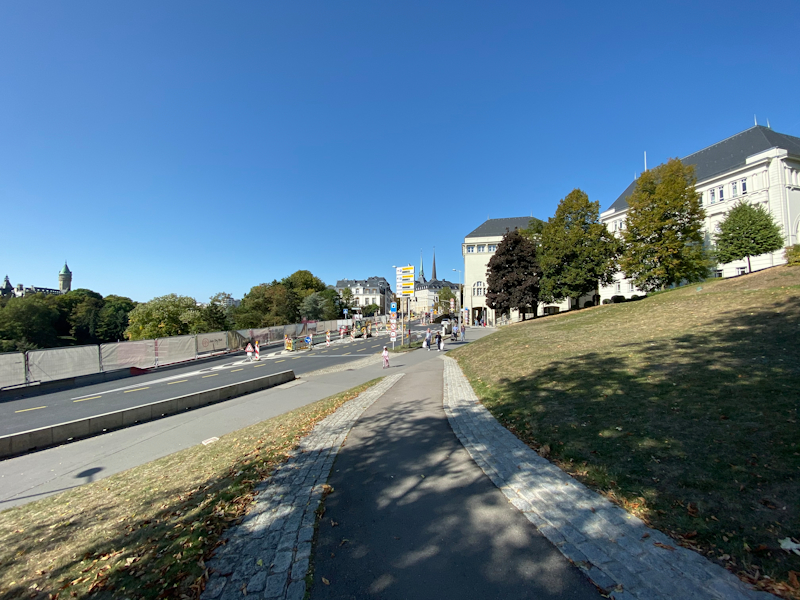
[ iPhone 11 Pro ] - [ iPhone XS ] - [ iPhone X ]
[ S10+(S) ] - [ S10+(E) ] - [ Pixel 3 ]
[ P30 Pro ] - [ Xperia 1 ] - [ G8 ]
Apple’s main improvements here again are color balance and better HDR retaining more details in the highlights of the sun-lit parts.
The telephoto keeps flip-flopping between being an improvement and being a degradation. Here the 11 has again more noise in it and appears less sharp than the XS. Also notice the reds of the traffic signs is a lot more muted on the 11, something also present on the main camera.
Composition of the wide-angle is good although it’s lacking in dynamic range compared to the S10. It’s also noticeably lacking in detail.

[ iPhone 11 Pro ] - [ iPhone XS ] - [ iPhone X ]
[ S10+(S) ] - [ S10+(E) ] - [ Pixel 3 ]
[ P30 Pro ] - [ Xperia 1 ] - [ G8 ]
In the next scene we’re seeing quite a large difference between the 11 Pro and the XS: The 11 is quite a lot brighter but at the same time the sky is also a lot more blown out. The brighter picture does end up more representative of the scene at the time.
On the telephoto the 11 Pro has more contrast, but it’s again noisier. The foreground parts we can see a bit of blur caused by the camera’s shallower depth of field due to the larger aperture.
The wide-angle did very well in terms of exposure here as some phones tended to be too dark.


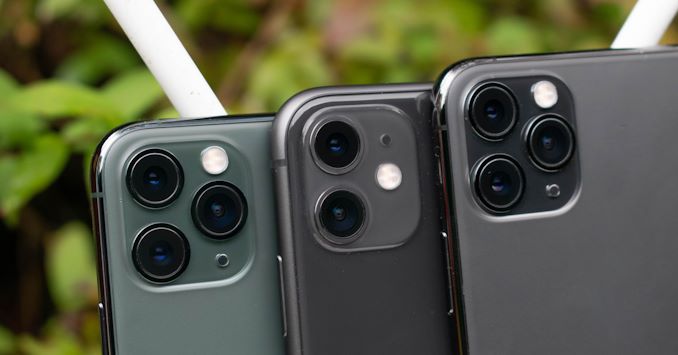








242 Comments
View All Comments
Andrei Frumusanu - Monday, October 21, 2019 - link
The ROG2 is in the charts. It's getting good scores because it's the only S855+ phone in the charts, because the Adreno 640 has extremely high ALU performance, and because the phone itself is allowed to reach much higher temperatures than the iPhones.The benchmark *tests* are the exact same other than being run on different APIs. What's being rendered is identical between iOS and Android is the exact same.
techsorz - Monday, October 21, 2019 - link
Very nice, I think you should write that in your review. Although taking an iPhone review and then starting off with exploiting its apparent weakness on the first graph, which is the only thing most people will read, isn't very objective in my opinion. I also generally think it's better craftmanship to run benchmarks that have received updates on both devices, regardless.I mean, opening 3Dmark on the new iPhone literally starts it up in an iPhone 8 compatibiltiy mode. You can tell by how the UI doesn't even border the entire display. I just don't see a single compelling argument as to why you would ever pick this tool.
techsorz - Monday, October 21, 2019 - link
Hi Andrei, I see that you updated the review. I apologise for my harsh tone, thank you for this discussion, I learned a lot of new info.Andrei Frumusanu - Monday, October 21, 2019 - link
I updated absolutely nothing ...............techsorz - Monday, October 21, 2019 - link
Oh so you are here, why are you not addressing my point ?Andrei Frumusanu - Monday, October 21, 2019 - link
What point? The UI is irrelevant, the test is offscreen.techsorz - Monday, October 21, 2019 - link
Okay, i'll just have to quote yourself then:" I’ve actually gone back and quickly retested the iPhone XS on iOS13 and did see a 20% increase in performance compared to what we see in the graphs here; " - Andrei Frumusanu
And here is the knockout:
" the workload is running on Metal and the iOS version is irrelevant in that regard." - Andrei Frumusanu
Jesus christ, pull yourself together and fix your god damn review.
People reading, you can make your own conclusion here.
Andrei Frumusanu - Monday, October 21, 2019 - link
There is nothing to fix and there is nothing wrong with the benchmark, you went from the test being old and broken, to talking about it throttling differently because it's older, to the UI being an issue when it's completely irrelevant. The scores are what they are because that's the performance of the chip.The physics test sucks on Apple because it's one weakness in their microarchitecture: https://benchmarks.ul.com/news/understanding-3dmar...
techsorz - Monday, October 21, 2019 - link
Are you literally quoting an article from 2013 to prove something? I didn't go from anywhere, it IS old and broken. The score does NOT represent the throttling you would expect on updated software and certainly can NOT be graphed and compared with the Android version. It is BS that the app renders the same thing, you have literally 0 way of knowing since you didn't write the code.And I didn't go "herp derp, the UI is small" - I said that the app is so ancient that it literally boots in compatibility mode for the iPhone 8. And it is a real thing, go ahead and check the developer forums.
"The scores are what they are because that's the performance of the chip." ...
" I’ve actually gone back and quickly retested the iPhone XS on iOS13 and did see a 20% increase in performance compared to what we see in the graphs here; "
Comeone dude, stop it.
Andrei Frumusanu - Monday, October 21, 2019 - link
The THROTTLING has nothing to do with the software version or and GPU driver updates that Apple makes to improve performance. The improved drivers on the A12 in iOS13 do NOT change the throttling % between peak performance and sustained, which is a PHYSICAL characteristic of the phone.The workloads renders the SAME SCENE both on Android and iOS. We work closely with Futuremark, the developer of the benchmark, along with the developers of GFXBench. If you cannot accept this you have no place reading AT as I can not do anything more to convince you of basic facts regarding the testing.
The compatibility mode you blarb about is related to the UI resolution. It DOES NOT matter in any way for the test as it's been rendered off-screen in our suite. The performance results DO NOT CHANGE.
I am completely done with this topic.